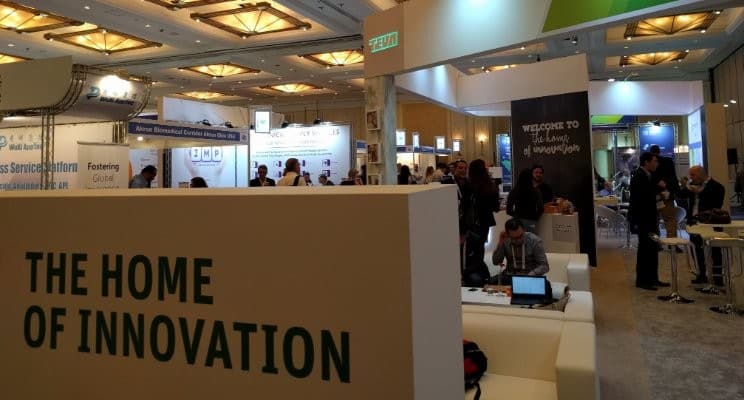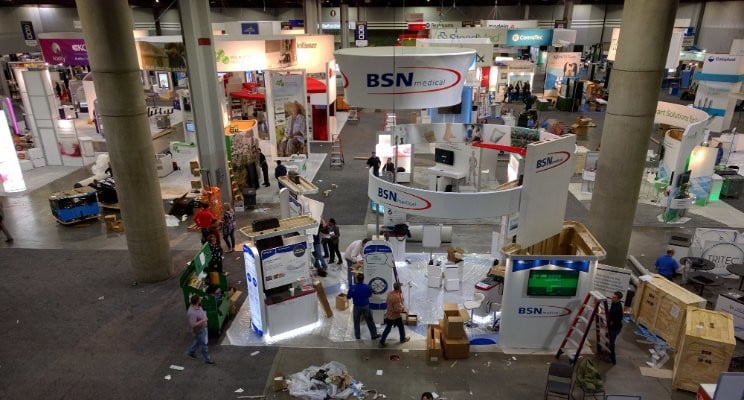Recent Wound Care & Regenerative Medicine Innovation Trends
(20 Jun 2016) Following is the final article in a series reviewing emerging advanced wound care and regenerative medicine trends and implications for the future of the industry. Part 1 focused on wound diagnostics approaches. Part 2 analyzed corporate strategy and positioning among the major wound care players. Part 3 will look at emerging innovative therapies, trends, and opportunities. Emerging Innovative Therapies In my prior post on trends in advanced wound care and regenerative medicine, I stated that the most successful of the next generation of therapies will need to simultaneously deliver high levels of clinical efficacy and cost effectiveness. In this post, I will demonstrate that it is possible for solutions to both meet these criteria and still be highly creative and innovative. Due to my background in both wound care services management and product commercialization, innovators and entrepreneurs in this space often approach me for clinical, financial, operational, and strategic insights before and during early-stage commercialization. The result is that I get an inside look at many emerging solutions, even before they get a lot of attention. However, for many of those solutions, I have also committed to refrain from discussing material aspects of their business. Although I cannot disclose all of the emerging innovations and therapies I have had the opportunity to be involved with, I will share a few exciting ones (and my thoughts on them) that I have no formal business or financial relationships with and can therefore discuss freely: 1) Compression Therapy Meets Smart Materials Ask any vascular, podiatric, or wound care clinician about compression therapy and they will tell you, “It works great–when the patients use it!” Indeed, chronic venous efficiency and related comorbidities are the causes of many advanced wounds (venous leg ulcers), and can exacerbate treatment of others such as traumatic, surgical, and diabetic leg ulcers. In addition to chronic leg ulcers, swelling, blood clots, and other issues can be mitigated with compression therapy. Traditional compression stockings can be uncomfortable and difficult for patients to put on without assistance. This can be due to age, arthritis, poor mobility/flexibility/dexterity, and related issues. Pneumatic compression pumps, which use air chambers to squeeze fluid out of the legs, can also be effective. Yet due to their cost, bulk, and cumbersomeness, patients tend to refuse the modality, or use it for just a few days or weeks before compliance drops. Moreover, they cannot easily bring the pump with them to work, vacation, and other places. It’s no surprise that partial or non-compliance with traditional compression is about 79%. Finally, from the point of view of the physician/clinician/case manager/administrator who is usually the one facilitating the order, the multiple specific documentation requirements and order forms can be a huge hassle compared to ordering traditional compression. (Above: ElastiMed Founder & CEO Omer Zelka demonstrates a prototype of his smart-material-based compression therapy device at the May 2016 IATI Biomed Conference in Tel Aviv) Enter ElastiMed. ElastiMed is using smart materials to develop a wearable compression therapy device to improve circulation in the lower extremity. The lightweight stocking presents patients with a comfortable, easy-to-wear, highly effective and affordable treatment option. The garment, which can be put on effortlessly like a normal sock, holds a lightweight battery. The battery sends regular pulses of low energy through the stocking, which allows it to contract and “massage” the leg, much like a pneumatic compression/lymphadema pump. In short, by using nanotechnology, their solution combines the the mobility and cost effectiveness of a traditional compression stocking with the comfort, ease-of-application, and clinical effectiveness of a compression pump. (Below: a video demonstration of ElastiMed’s technology shows the device and its compression mechanism in action) According to Founder and CEO Omer Zelka, “I was a student of electrical engineering when I found out about the materials, fell in love with the technology, and constructed an improvised lab at home. When I reached a breakthrough with the materials, I started looking for the right application for it…After talking to countless physicians—and especially to patients—I began to understand the pain that people with these conditions experience: The current compression stockings on the market are uncomfortable and very difficult to put on and take off. With the majority of people being elderly or suffering from arthritis, wearing a compression stocking becomes Mission: Impossible. In most cases, they just stop using the stocking, which leaves them vulnerable to DVT, lymphedema, and other venous diseases or conditions such as chronic wounds.” Patient-centric? Check. Clinically efficate? Check. Price attractive? Check. I believe that Elastimed’s technology has the potential to disrupt the medical compression therapy industry, and as a result, to have a significant impact on the delivery of advanced wound care and related chronic venous disease. My industry sources recently informed me of at least one major advanced wound care company that is attempting to develop a similar smart materials compression product as well (launch targeted for 2017). Leading traditional compression therapy firms fighting to differentiate such as BSN Medical (who just announced they are looking to be acquired or listed), Convatec, 3M, medi, Sigvaris, Tactile Medical, and even athletic compression firms like Under Armour and Nike will likely take a keen interest in ElastiMed (if they haven’t already). 2) Growing & Harvesting Human Collagen from Plants As of this writing (June 2016), there are something like 60+ soft tissue related allografts / CTP (cellular and tissue products marketed in the US. Generally, I would not advocate that this is an underserved market in need of new entrants. However, sometimes there are innovative approaches to this space, with implications beyond wound care. CollPlant (TLV:CLPT) is such a technology. CollPlant has developed a method of genetically modifying tobacco plants so that their leaves grow human collagen, which are then harvested and turned into allograft/biological products for chronic, surgical, and related wound care/regenerative medicine applications. Their VergenixFD gel and VergenixWD matrix products were recently awarded CE approval and distribution in some Western European markets. At this time, they are simultaneously working on the necessary clinical trials to gain US FDA approval as well. Why tobacco plants? In ideal conditions, they can grow to a height of two meters (six feet) in one month. Also, their large leaves allow for relatively large quantities
Recent Wound Care & Regenerative Medicine Innovation Trends Read Post »







